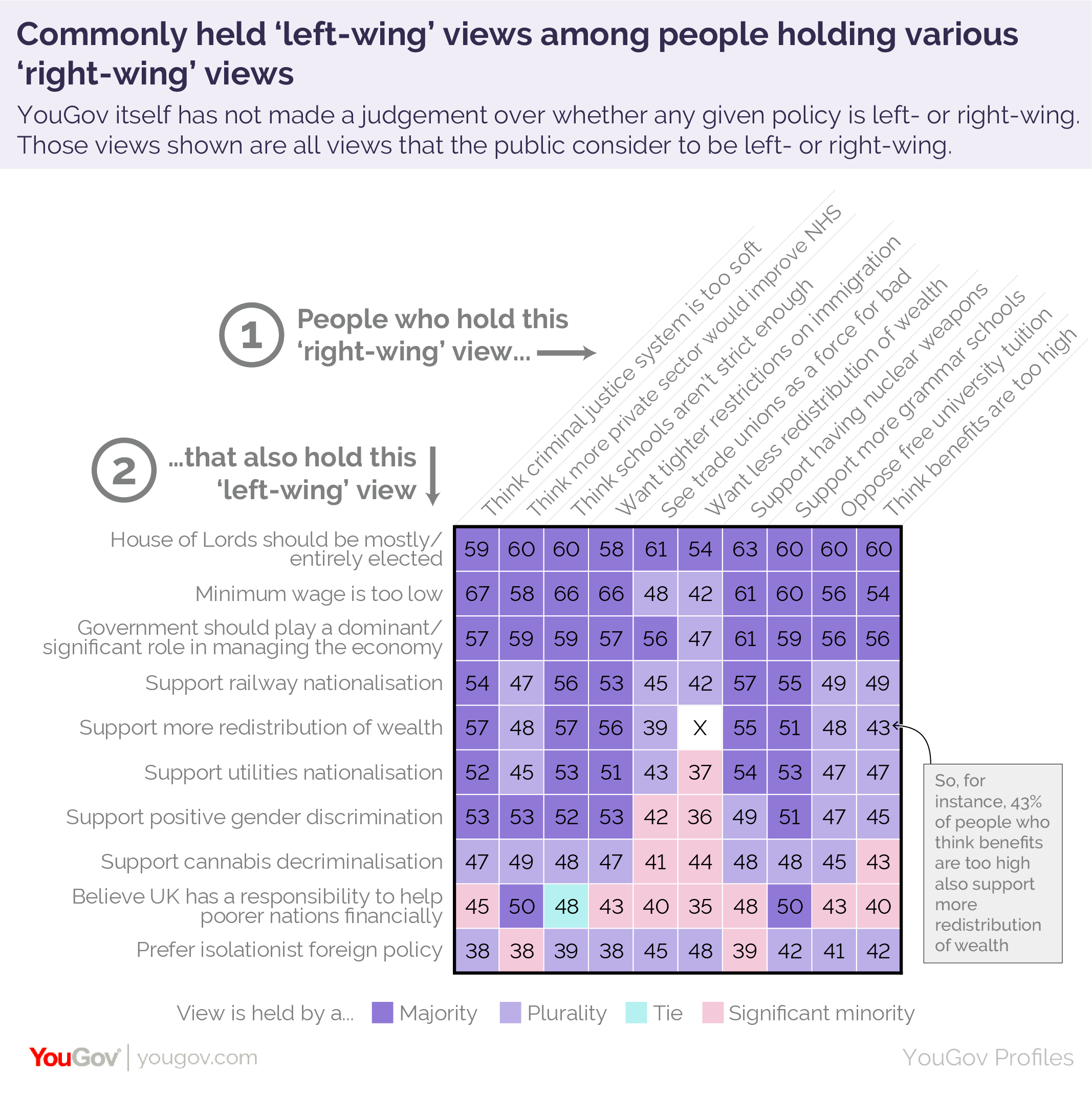Beneath the surface of "left" and "right" political identities, a tumult of complex views in the UK
It’s a polarity we try to evade and avoid on A/UK - “left” and “right”.
At the very least, the politics of Brexit, climate crisis and automation have shown that such identities have a lava of possibilities running underneath them. For example, in terms of climate, what exactly might a consistent “conserving” (let alone conservative) position be?
What exactly is the distinction, in terms of democratic power, between “take control” and “take back control”? If automation will throw employment into upheaval, would an automation tax and a universal basic income be a “left” or “right” policy - do we want it to simplify welfare, or support a life beyond the era of the “work ethic”?
Our preference is to encourage community deliberation about their immediate conditions, and keep minds open about the policies and preferences that will emerge to empower that particular locality or network. We have hopes that “citizen action networks”, and the processes we have been developing, will become a means towards that. Chris Cook, one of our fellow travellers, calls it “the Policy makes the Party”.
But in the meantime, we are fascinating by this poll from YouGov, titled “Left Wing vs Right Wing: It’s Complicated”. Their rationale is:
A new angle of attack from Jeremy Corbyn seems to be that Boris Johnson is presiding over the most right-wing government in living memory.
That might be a helpful move if politicians had an accurate assessment of where the public stands on the left-right spectrum. But if the reaction in Westminster to YouGov survey data from earlier this week showing that 75% of Brits (including 61% of Labour voters) support the PM’s proposed expansion of stop and search powers is anything to go by, they may well not.
Framing politics in terms of left-wing and right-wing might be simple for politicians, and comforting to activists, but it seems that these terms just aren’t that useful for talking about - or indeed to - the general public.
YouGov are at pains to point out that these judgements on left and right policy are made and chosen by those polled, not defined by the organisation.
At most only half know what is a left-wing policy and what is a right-wing policy
As the charts show below, just below half of all Britons are unsure as to whether a policy belongs on the right or the left. Just over a half think the most left-wing view is “believing that the minimum wage in the UK is too low”; just over a half think the most right-wing view is “believing the level of welfare benefits in the UK is too high”.
It’s fascinating that an active idea of being “in labour”, rather than welfare dependent, is regarded as a “left” position.
What views do left- and right-wing people hold?
The graphic below shows the issues that seem to distinguish people, as they self-identify as left and right wing. Again, it’s interesting how far over to the right on “tighter restriction on immigration”, and “opposing nuclear weapons”, those self-identifying as left are.
What views do left- and right-wing people have that they ‘shouldn’t’
Again, it’s fascinating to see that the top 2 majority “right-wing” views that left-identifiers hold - stricter school discipline; too much softness in the criminal justice system - are family-and-community based fears and anxieties. Also, among right-identifiers, that the top 2 majority “left-wing” views they hold are about big political and economic structures - democratising the Lords, intervening in the national economy.
Finally, on a very rich set of grids, YouGov found that:
Large numbers of those who hold key left-wing views also support right-wing policies (and vice versa). For instance, among Britons who support a greater redistribution of wealth, 59% support capital punishment, 72% think the criminal justice system is too soft and 68% want tighter restrictions on immigration.
Conversely, as the graphs below show, those who support tighter restrictions on immigration also have majority preferences for an elected House of Lords, redistribution of wealth, the nationalisation of railways and utilities, positive gender discrimination.
Of course, the usual caveat: the questions may have been weighted by respondents, but they were selected by the organisation, which will imply its own framing. For example, what would have been the response to “a tax on robots that replace human jobs”, or “giving local government more powers to protect communities”, or “restored public services for children and the elderly”?
But at the very least, this exercise points us away from the existing line-up between character and ideology, and asks us to perhaps think about a much more subtle landscape of human aspiration and anxiety, sitting beneath the usual Punch-and-Judy show of political culture.
What would a set of policies guided by, say, the Human Givens map of emotional needs look like? How might we address status, privacy, autonomy, competence, security, or the other “givens”, in a pole of where one felt politically?








